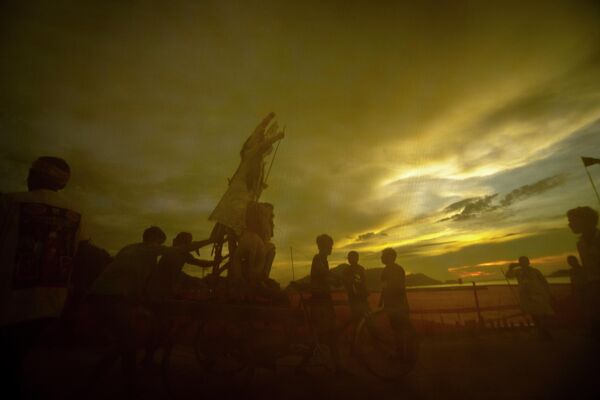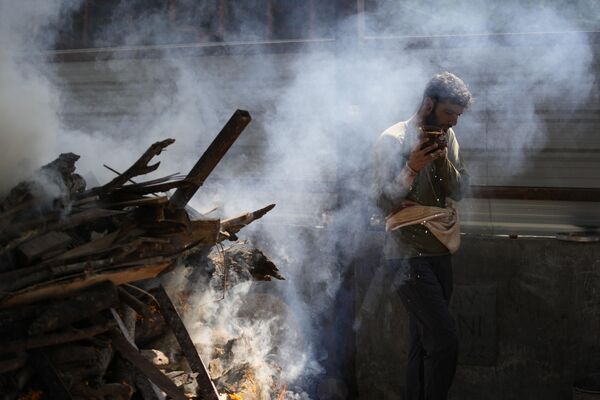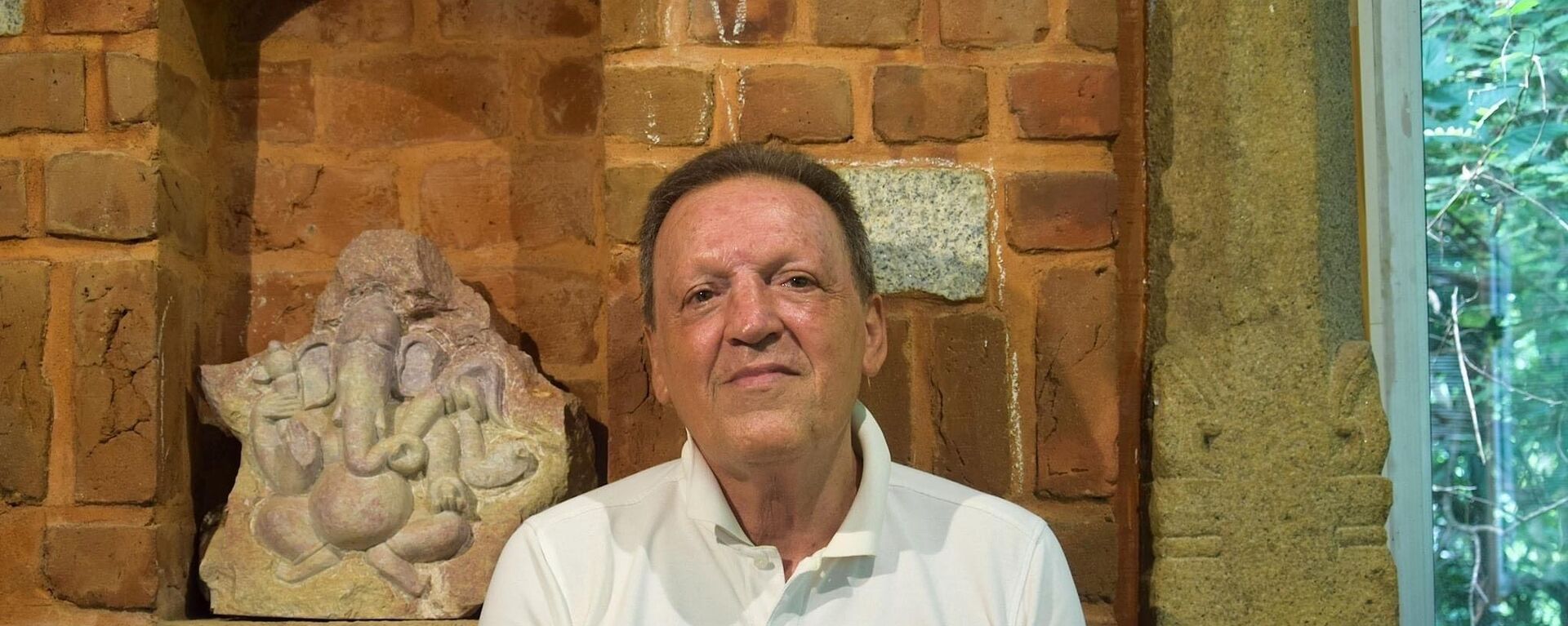
Should Hinduism Play a Role in India’s Soft Power Strategy?
Hindutva, or the soft power of Hinduism has in its fold the keys to bring humanity together – and also meanwhile it tells us that we need to stand up for what is just.
Before anything, we need to define what is real Hinduism.
Anybody who has studied Hinduism knows that there is very ancient spirituality that props it from behind. The extraordinary quality of that spiritual philosophy is that it is universal, because it accepts that God, He or She, manifests at different times, using different scriptures and different names. Thus, for a Hindu, God maybe Krishna, Vishnu, but also Jesus Christ, Buddha, Mohamed or Zarathustra. This may sound like a sacrilege to a Christian or a Muslim, who is set upon believing that there is only one God – his - and that any other God is false and that its disciples must be converted or maybe killed. But here comes whereby Hinduism can save us: unless we start accepting each other, unless all religions come together – “I am a Muslim, I remain a Muslim, but I accept that people have other beliefs”; “I am Christian, I stand by my faith, but I respect other religions.” This is what Hinduism can bring to the world.

A man performs rituals during the funeral of Puran Krishan Bhat, a member of Kashmir’s minority Hindu community in Jammu, India, Sunday, Oct.16, 2022. Bhat, was shot by assailants at his home in Shopian district Saturday in violence police blamed on militants fighting against Indian rule in the disputed region. (AP Photo/Channi Anand)
© AP Photo / Channi Anand
Even further, ancient Hinduism had a unique concept, The World is One Family, in Sanskrit: Vasudhaiva Kutumbakam. The Prime Minister of India, Mr. Shri Narendra Modi, has taken up again this ancient wisdom and used it as a motto for the upcoming September G20 event in Delhi where all the World leaders will assemble. Originally taken from another ancient Hindu Scripture, the Maha Upanishad , it has influenced Hindu philosophy & thinking ever since. Many gurus and etxts such as the Bhagavata Purana describe vasudeva kutumbakam as the “highest Vedantic thought.”, which defines all life – human, animal and vegetal. This concept will help us today to interconnectedness between nations, people and religions, because the goals of any yoga is unity.
Unfortunately, we see that the World is not yet ready for this coming together paradise. And we need to go back to another ancient Hindu sacred text: The Bhagavad Gita. What does the Gita tell us? That when your country, your borders, your women, the very safety and wellbeing of your citizens is in danger, one needs to face the enemy and fight. There the Lord, Shri Krishna, enjoins his disciple Arjuna who has dropped his weapons, because on the one hand he is against violence - as many of the youth and the left leaning people are today - and on the other, he sees some of his relatives in the opposite army.
“You only slay the body because the soul is immortal and is born again and again till it reaches perfection”, Shri Krishna tells him. He continues: “as a Kshatriya (warrior) it is your duty to fight your enemy, by doing so, you fulfill not only your karma but also strike a blow against adharma” (that which opposes human evolution and goodness).
Therefore, the question needs to be asked: can India afford to be a soft power, when it is facing itself threats - on the one side from an hostile nuclear Pakistan, but also on the part of China, who is repeatedly challenging India’s territorial integrity? Obviously, in the spirit of Bhagavad Gita, India needs to be ready - even for a war - which means that it needs a weapons such as the French Mirage and soldiers, battle hardened and properly armed. Russia, although it is heavily criticized by western nations, is showing us that when it comes to the integrity of one’s territory, one needs to make a stand and not budge.
There are 800 million Hindus in India, 1;3 billion in the world, the 3rdlargest religion. Wherever Hindus have gone, be it the US, UK, Canada, Mauritius, etc, they have integrated well, some of them are CEOs of large companies like Microsoft, IBM or Adobe. They pay their taxes, do not riot or hijack planes full of innocent people to ram their on towers also full of innocent people, their children top in schools and universities.
Is there a soft Hindu power, then? IN 1998, when Atal Bihari Vajpayee became PM of India, with Lal Krishna Advani as his N°2 and Murli Manohar Joshi as N°3, one thought that Hindu power had come to the fore and that, as many had dreamt, a Hindu Rashtra, a Hindu kingdom will be again established in South Asia, 500 years after the bloody demise of the last great Hindu empire, that of Vijaynagar (or Hampi). But Mr Vajpayee preferred soft power, although he ordered India’s second nuclear explosion, in Pokharan, Rajasthan. Ultimately, his party, the BJP, was beaten in 2004 and the Congress came back for 10 years. In 2014, another Hindu firebrand, Narendra Modi, was elected as PM on a nationalist wave. One expected then a harder Hindu power, than the one practiced by Mr Vajpayee, as Mr Modi never minced his words while campaigning. But the new PM also embraced soft Hindu power, reaching out to his enemies and keeping quiet whenever Hindus were murdered, like in West Bengal. He did however, at the beginning of his terms, fulfill some of the Hindu demands, such as the building of the Ayodhya temple, to replace the ancient one, that had been razed by Mogol invader Babur (who built a mosque over it). He also repealed Article 370, which forbade any Indian to settle in Kashmir (but allowed Kashmiri Muslims to settle anywhere India, where they have cornered today the Souvenir market).
But on the whole, Mr Modi is practicing the soft power dear to most Hindus - and we see that China takes advantage of it, using the carrot and stick tactics, which worked so well with India.
In conclusion, we see that Hinduism or if you will, Hindutva, is such a wide profound, far reaching and universal spirituality that it offers us both the options: on the one hand a future ideal world, where all nations and all religions will cohabit peacefully and harmoniously; and on the other, the clear and strong injunction of meanwhile standing up to the enemy - with force if necessary. Therefore, the future spirituality of the World could be derived from these ancient scriptures that are the Vedas or the Bhagavad Gita, with practical, universal tools, such as meditation, which can be practiced by anybody belonging to any faith – the simple repetition of a Mantra or visualization of your God; or Pranayama, the science of breathing, which helps to control emotions and diseases, as medical studies have proved:
“the air that we breath around has no religion and belongs to everybody” says the modern Guru Sri Sri Ravishankar, who has centers in 126 countries including Russia.. And finally hata-yoga, which is also a gift of Hinduism to the world and is now practiced by one third of humanity.
The writer is the author of “Hindu Power in the 21st century” & In Defense of a billion Hindus” (Har Anand New Delhi)
Go back to the beginningGo back to the main page

